Austin Energy's $2.3 billion biomass energy contract approved
In one of the largest renewable energy deals of this year, the Austin City Council has given Austin Energy, its city-owned electric utility, approval to enter into a $2.3 billion contract to purchase all power produced over a 20-year period by a proposed 100-megawatt biomass power plant. The purchase power agreement will move Austin closer to its goal that by 2020, some 30 percent of the power generated by Austin Energy will come from renewable resources. The biomass plant delivers the baseload for Austin Energy's intermittent renewables.
The biomass plant will be built in Sacul, Texas, about 10 miles northwest of Nacogdoches and will be the largest of its type in the United States. The facility will burn wood waste from logging and mill activity as well as urban wood waste from clearing, tree trimming and pallets. All fuel sources for the plant must meet Texas Renewable Energy Credit standards and Texas Forestry Best Management Practices. It is projected to go on line by the spring of 2012.
Advantages of the biomass plant
The biomass plant will provide a firm source of renewable energy, available 24/7. Power from the facility provides a hedge against rising natural gas prices and potential carbon tax legislation. It also provides a hedge against transmission congestion which has begun to significantly increase the cost of transporting wind generated power from west Texas to other areas of the state.
 biomass :: bioenergy :: biofuels :: energy :: renewables :: baseload :: climate change :: sustainability ::
biomass :: bioenergy :: biofuels :: energy :: renewables :: baseload :: climate change :: sustainability ::
The biomass energy contract will increase Austin Energy renewables to 18% in 2012.
In addition to the goal to meet 30 percent of energy sales through renewable resources by 2020, the Austin City Council has set a goal to offset the need for a 700 MW power plant by that date through energy efficiency. It has also set a goal to cap CO2 emissions from generation and to offset current emissions as well as emissions from future generation through either the purchase of CO2 credits or other means. These goals again support the Austin Climate Protection Plan, one of the most comprehensive and aggressive greenhouse gas reduction programs enacted by any city in America.
The biomass plant would be built and managed by Nacogdoches Power LLC, a joint venture between Energy Management Incorporated of Boston and BayCorp Holdings of Portsmouth, New Hampshire. The Group has developed and owned or operated more than 1,000 MW of generation in the past including biomass, biodiesel, hydroelectric, natural gas and nuclear. The group has also been selected to develop a biomass project for Gainesville (Florida) Regional Utilities.
Article continues
The biomass plant will be built in Sacul, Texas, about 10 miles northwest of Nacogdoches and will be the largest of its type in the United States. The facility will burn wood waste from logging and mill activity as well as urban wood waste from clearing, tree trimming and pallets. All fuel sources for the plant must meet Texas Renewable Energy Credit standards and Texas Forestry Best Management Practices. It is projected to go on line by the spring of 2012.
Advantages of the biomass plant
The biomass plant will provide a firm source of renewable energy, available 24/7. Power from the facility provides a hedge against rising natural gas prices and potential carbon tax legislation. It also provides a hedge against transmission congestion which has begun to significantly increase the cost of transporting wind generated power from west Texas to other areas of the state.
A firm supply of renewable energy is critical if Austin is to meet the 30 percent renewables goal. That goal will be difficult to reach without a power source that is available during peak demand periods. - Roger Duncan, Austin Energy General managerThe cost of the biomass power would be recovered by Austin Energy through the fuel charge or through the utility’s green power program, GreenChoice. Recovering costs through the fuel charge is projected to result in up to a $1.50 decrease to a projected $2.50 increase in the electric bill of the average residential customer beginning in 2012, depending on the cost of other fuels particularly natural gas.
The projection is that natural gas prices will continue to escalate over the long-term. The higher natural gas prices rise, the more this project will save our customers since the biomass-generated power effectively replaces natural-gas-fueled generation for the utility. - Roger Duncan, Austin Energy General managerIn addition, the cost of power from the plant will be reduced if a federal Production Tax Credit is extended by Congress. It would be further reduced if a State Fuel Grant program approved by the Texas Legislature is funded through subsequent legislative action:
 biomass :: bioenergy :: biofuels :: energy :: renewables :: baseload :: climate change :: sustainability ::
biomass :: bioenergy :: biofuels :: energy :: renewables :: baseload :: climate change :: sustainability :: The biomass energy contract will increase Austin Energy renewables to 18% in 2012.
In addition to the goal to meet 30 percent of energy sales through renewable resources by 2020, the Austin City Council has set a goal to offset the need for a 700 MW power plant by that date through energy efficiency. It has also set a goal to cap CO2 emissions from generation and to offset current emissions as well as emissions from future generation through either the purchase of CO2 credits or other means. These goals again support the Austin Climate Protection Plan, one of the most comprehensive and aggressive greenhouse gas reduction programs enacted by any city in America.
The biomass plant would be built and managed by Nacogdoches Power LLC, a joint venture between Energy Management Incorporated of Boston and BayCorp Holdings of Portsmouth, New Hampshire. The Group has developed and owned or operated more than 1,000 MW of generation in the past including biomass, biodiesel, hydroelectric, natural gas and nuclear. The group has also been selected to develop a biomass project for Gainesville (Florida) Regional Utilities.
Article continues
 --------------
--------------
 Mongabay, a leading resource for news and perspectives on environmental and conservation issues related to the tropics, has launched Tropical Conservation Science - a new, open access academic e-journal. It will cover a wide variety of scientific and social studies on tropical ecosystems, their biodiversity and the threats posed to them.
Mongabay, a leading resource for news and perspectives on environmental and conservation issues related to the tropics, has launched Tropical Conservation Science - a new, open access academic e-journal. It will cover a wide variety of scientific and social studies on tropical ecosystems, their biodiversity and the threats posed to them.



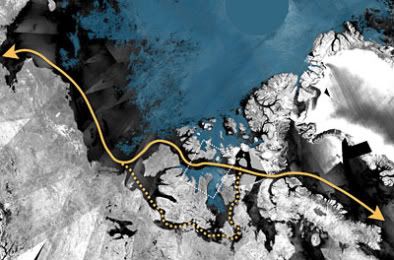
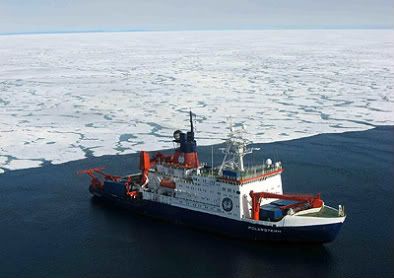
 Meeting the world's growing energy needs while responding to global warming during the 21st Century will be one of the biggest challenges humanity has ever faced, say scientists in a set of interesting but basic
Meeting the world's growing energy needs while responding to global warming during the 21st Century will be one of the biggest challenges humanity has ever faced, say scientists in a set of interesting but basic 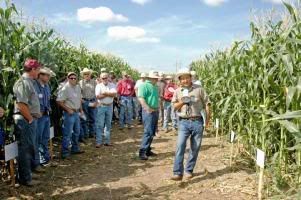
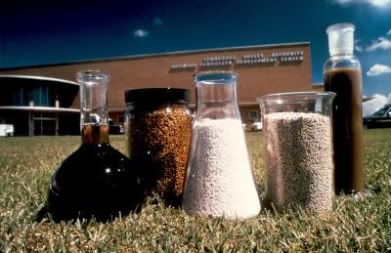
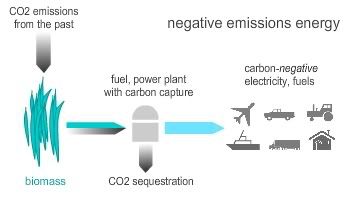









Friday, August 29, 2008
Anthropologists discover ancient 'garden cities' in the Amazon - rainforest not 'pristine'
Anthropologist Michael Heckenberger of the University of Florida teamed with the local Kuikuro people in the Brazilian state of Mato Grosso to uncover 28 towns, villages and hamlets that may have supported as many as 50,000 people within roughly 7,700 square miles (20,000 square kilometers) of forest — an area slightly smaller than New Jersey. The larger towns boasted defensive ditches 10 feet (three meters) deep and 33 feet (10 meters) wide backed by a wooden palisade as well as large plazas, some reaching 490 feet (150 meters) across.
The remains of houses and ceramic cooking utensils show that humans occupied these cities for around 1,000 years, from roughly 1,500 years to as recently as 400 years ago. Satellite pictures reveal that during that time, the inhabitants carved roads through the jungle; all plaza villages had a major road that ran northeast to southwest along the summer solstice axis and linked to other settlements as much as three miles (five kilometers) away. There were bridges on some of the roads and others had canoe canals running alongside them.
The remains of the settlements also hint at surrounding large fields of manioc, or cassava (a starchy root that is still a staple part of the Brazilian diet) as well as the earthen dams and artificial ponds of fish farming, still practiced by people who may be the present-day descendants of the Kuikuro.
Although such "garden cities," as Heckenberger describes them in Science, do not match the dense urbanism of contemporary Brazilian metropolises such as Rio de Janeiro or São Paulo, they do blend seamlessly into the jungle and maximize use of limited natural resources. They also suggest that the rainforest bears the marks of intense human habitation, rather than being 'pristine':
But, ultimately, these cities died; most likely a victim of the diseases brought by European explorers in the early 16th century, according to Heckenberger. Two thirds or more of the original human inhabitants of Brazil are believed to have been killed by such disease, and the forest quickly swallowed the cities they left behind.
As a result, later European explorers had no idea that a civilization had once flourished in the Amazon, despite clues in kilometer-long earthworks and unusually fertile so-called terra preta soil. The 500 or so Kuikuro may have known of their ancestors' exploits—and they may have drawn the attention of Fawcett and other explorers—but only now can the "lost cities" of the Amazon claim to have been found.
The discovery adds credence to the theory which says that vast parts of the Amazon rainforest were once densely populated and managed, instead of 'virgin'. Romantic ideas about the 'untouched', 'wild' nature of these forests date back to the 19th century but have always contradicted earlier accounts of explorers. Once European populations, living in industrialized societies, became alienated from nature, they started projecting their desires about 'pristine' ecosystems on other places - like the Amazon.
The findings in the Upper Xingu also demonstrate that the notoriously difficult tropical forest soils can be managed in such a way that they can sustain food production for large populations. Ancient Amazonian communities must have had highly optimised farming and soil management techniques in order to feed such large populations. The famous 'terra preta' soils - now seen as a solution to world hunger and climate change under the form of 'biochar' - could have been the key to this sustainable farming system.
References:
Charles C. Mann, "Ancient Earthmovers of the Amazon", Science, 29 August 2008: Vol. 321. no. 5893, pp. 1148 - 1152, DOI: 10.1126/science.321.5893.1148
David Biello, "Ancient Amazon Actually Highly Urbanized", Scientific American, August 28, 2008.
Scientific American: slideshow.
Article continues
posted by Biopact team at 6:16 PM 0 comments links to this post
